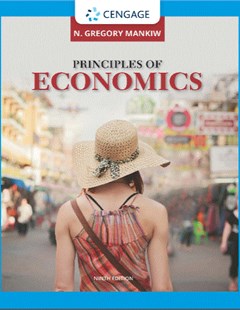Principles of Economics
To help you further master the key principles of economics in this edition, powerful student-focused digital resources are available in the leading MindTap digital learning and homework solution.
2021
Now you can master the principles of economics with the help of the most popular economics textbook trusted by students worldwide: Mankiw's PRINCIPLES OF ECONOMICS, 9E.
Using a clear, inviting writing style, this book emphasizes only the material that helps you better understand the world and economy in which you live.
You learn to become a more astute participant in today's economy with a strong understanding of both the potential and limits of economic policy.
Brief contents:
Part 1: Introduction:
Part 2: How Markets Work;
Part 3: Markets and Welfare:
Part 4: The economics of the Public sector;
Part 5: Firm Behavior and the organization of industry;
Part 6: The economics of labor Markets;
Part 7: Topics for further study;
Part 8: The Data of Macroeconomics;
Part 9: The real economy in the long run;
Part 10: Money and Prices in the long run;
Part 11: The Macroeconomics of open economies;
Part 12: A Macroeconomic Theory of the open economy.
N. Gregory Mankiw,Principles of Economics, Cengage Learning, 2021
 |  |  |
| Essential Methods for Planning Practitioners, Skills and Techniques for Data Analysis, Visualization, and Communication | Strategic Information Management Theory and Practice (fifth editor) |
Thứ Tư, 10:27 17/05/2023
Copyright © 2018 Hanoi University of Industry.